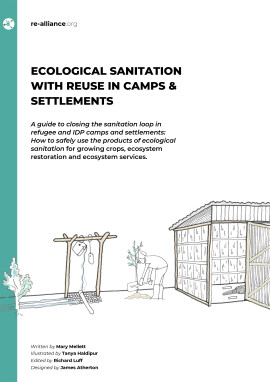
Water Lifting Devices
A Handbook
This is an updated and expanded new edition (formerly Water Pumping Devices), surveying the water-lifting technologies that are available and appropriate for smallholdings. It examines the costs and general suitability of the different technologies to enable farmers and policy makers to make informed choices.More than one billion people still do not have access to safe drinking water, and almost two billion people suffer from diseases arising from contaminated water due to poor sanitation. Irrigation is essential for the basic food requirements of billions of people. The growing world population and global climate change make the challenges of providing adequate clean water, sanitation, and food ever more pressing. At the heart of effective irrigation lies the problem of lifting or pumping water. This handbook provides a detailed review of the water-lifting technologies available for irrigation, along with new information covering the provision of drinking water for humans and livestock. Water Lifting Devices has long been the authority on the subject and this new third edition provides updated essential practical information for farmers, development workers, and all who need to make informed choices about water lifting technologies.
Published: 2006
Pages: 352
eBook: 9781780446370
Paperback: 9781853395383
| Foreword | |||
|---|---|---|---|
| Preface | |||
| Acknowledgements | |||
| 1. Introduction | |||
| 1.1 Scope and purpose of this book | |||
| 1.2 Importance of water and water lifting devices | |||
| 1.3 Water lifting and the environment | |||
| 1.4 Water lifting and development | |||
| 1.5 The choice of water lifting technique | |||
| 2.1 Planning for human and livestock water supplies | |||
| 2.2 Water requirements for humans and livestock | |||
| 3. Water lifting for small-scale irrigation | |||
| 3.1 Water management | |||
| 3.2 Outline of principles of small-scale irrigation | |||
| 3.3 Irrigation water requirements | |||
| 3.4 Net irrigation requirement | |||
| 3.5 Gross irrigation requirement | |||
| 3.6 Pumping requirement | |||
| 4. Water sources | |||
| 4.1 Choosing a water source | |||
| 4.2 Draw-down and seasonal variations of water level | |||
| 4.3 Water quality | |||
| 4.4 Water treatment | |||
| 4.5 Water storage | |||
| 5. Fundamental physical principles of water lifting | |||
| 5.1 Suction lift: the atmospheric limit | |||
| 5.2 Definitions of energy, work, power and efficiency | |||
| 5.3 System losses | |||
| 5.4 Flow through channels and pipes | |||
| 5.5 Efficiency of components: the importance of matching | |||
| 5.6 Practical power requirements | |||
| 5.7 Review of a complete pumping system | |||
| 6. Review of pumps and water lifting techniques | |||
| 6.1 Principles for lifting and movingwater | |||
| 6.2 Classification of water lifts and pumps | |||
| 6.3 Reciprocating and cyclic direct lift devices | |||
| 6.4 Rotary direct lift devices | |||
| 6.5 Reciprocating positive displacement pumps | |||
| 6.6 Rotary positive displacement pumps | |||
| 6.7 Reciprocating inertia pumps | |||
| 6.8 Rotodynamic pumps | |||
| 6.9 Air-lift pumps | |||
| 6.10 Water-hammer or impulse devices: the hydraulic ram pump or hydram | |||
| 6.11 Gravity devices | |||
| 6.12 Materials for water-lifting devices | |||
| 6.13 Summary review of water lifting devices | |||
| 7. Power for pumping | |||
| 7.1 Prime movers as part of a pumping system | |||
| 7.2 Human Power | |||
| 7.3 Animal power | |||
| 7.4 Internal combustion engines | |||
| 7.5 External combustion engines | |||
| 7.6 Electrical power | |||
| 7.7 Wind Power | |||
| 7.8 Solar power | |||
| 7.9 Water power | |||
| 7.10 Biomass and coal (non-petroleum fuels) | |||
| 8. The choice of pumping systems | |||
| 8.1 Financial and economic considerations | |||
| 8.2 Practical considerations | |||
| Appendix: Conversion of Common Units of Measurement Glossary | |||
| Further Information | |||
| Index | |||
| References |
Peter Fraenkel
Peter Fraenkel is a mechanical engineer with long experience of renewable energy systems and the author of many books and articles on wind, hydro, and tidal energy. He is a leading authority on water pumping technologies for developing country applications and was a founder and Director of I.T. Power from 1981 to 2000.
Jeremy Thake
Jeremy Thake, a mechanical design engineer, has worked for the appropriate technology organization DCS in Nepal for six years on micro-hydro systems.
Field Guide to Environmental Engineering for Development Workers
Manually Constructed and Operated Water Wells
2009
https://doi.org/10.1061/9780784409855.ch16 [Citations: 0]Underground Aqueducts Handbook
Chapter 15 Groundwater Structures throughout Turkish History
Şen, Zekâi
2016
https://doi.org/10.1201/9781315368566-16 [Citations: 1]Willingness to pay, borrow, and work for rural water service improvements in developing countries
Abramson, Adam
Becker, Nir
Garb, Yaakov
Lazarovitch, Naftali
Water Resources Research, Vol. 47 (2011), Iss. 11
https://doi.org/10.1029/2010WR010147 [Citations: 47]Discourses on the adoption of the Barsha pump: A Q methodology study in Nepal and Indonesia
Intriago Zambrano, Juan Carlo
Diehl, Jan-Carel
Ertsen, Maurits W.
Frontiers in Sustainable Food Systems, Vol. 6 (2022), Iss.
https://doi.org/10.3389/fsufs.2022.989753 [Citations: 2]




